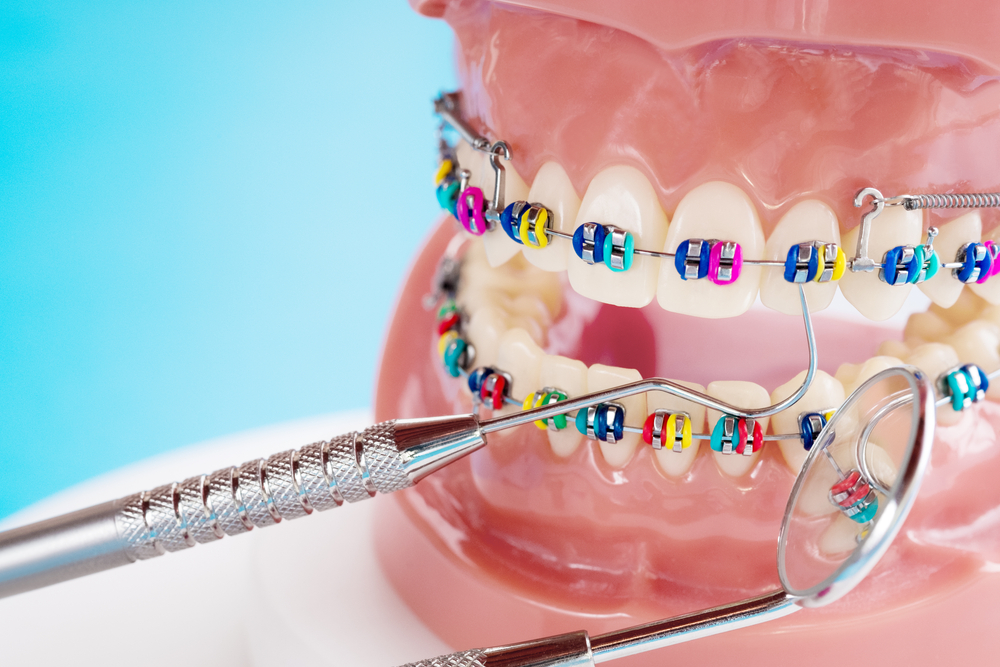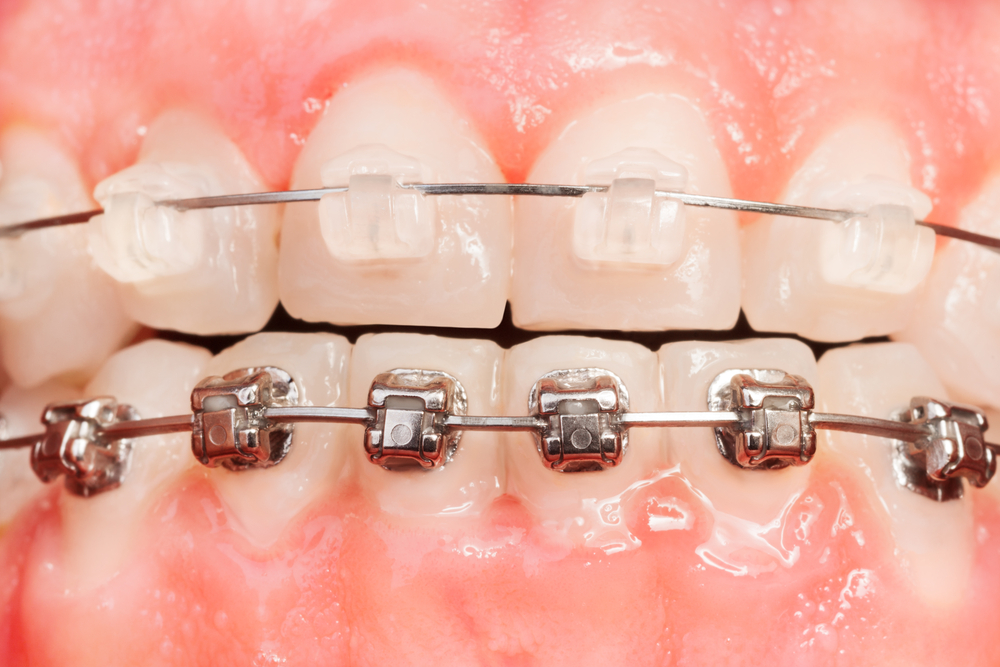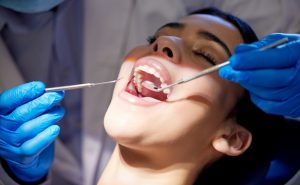Parkcrest Dental Group is a full-service family dentistry practice in Springfield, Missouri. We offer orthodontics to people of all ages, whether your 7-year-old needs a retainer to correct an underbite or you’re an adult who wants to improve your smile through braces.
In today’s blog, our dentists answer some frequently asked questions about traditional metal braces, an option for people who want a better smile.
What are traditional metal braces?
Traditional metal braces are small metal brackets (made of stainless steel or titanium) that adhere to your teeth using special orthodontic glue. They help move your teeth gradually with the assistance of a metal wire.
What are the parts of traditional metal braces?
This type of orthodontic device has several basic parts.
Molar Band
Your very back teeth have what’s called a molar band with a small tube attached. This is the part of your braces that an orthodontist will periodically adjust to gradually move your teeth over the course of your treatment.
Buccal Tube
Each molar band has a buccal tube, a small part welded securely to the outside of the band. This tube is where your orthodontist will make adjustments to the tightness of your braces to help your teeth move gradually.
Archwire
The archwire is the metal wire anchored by the molar bands and attached to metal brackets. Tightening the archwire is the key to straightening your teeth.
Brackets
Each one of your teeth will have metal brackets attached to your teeth with a special orthodontic adhesive. Each bracket attaches to the archwire to facilitate the movement of each individual tooth.
Rubber Bands
Tiny rubber bands keep the archwire attached to the metal brackets of braces. Your orthodontist uses special tools to put these rubber bands on.
Litigating Module
The litigating module is a small, doughnut-shaped piece on each metal bracket that holds the archwire in place on the brackets.
What is the purpose of traditional metal braces?
The main purpose is to straighten your teeth by aligning crooked or crowded teeth.
However, traditional metal braces can help with other problems, including:
- Misaligned bite to help you chew food better.
- Jaw problems, such as an overbite or underbite.
- Eating or chewing problems.
- Issues with speaking improperly.
- Difficulties when trying to clean your teeth.
Are traditional metal braces hard to wear?
Not at all.
Advancements in dental technology have made traditional metal braces more comfortable, sleeker, and smaller than ever before.
How often will my orthodontist tighten or adjust my traditional metal braces?
In general, every four to six weeks.
Tightening your braces keeps a steady, gradual, and light pressure on your teeth for effective straightening.
How long will I have to wear traditional metal braces?
Every patient is unique. Some patients may wear traditional metal braces for six months, while others will wear them for two years.
How can I personalize my traditional metal braces?
You can personalize your braces using colored bands. Consider your favorite team colors, a favorite holiday, or perhaps a rainbow of colors of your choosing. The combinations are endless!
What does an appointment look like for traditional metal braces?
Your first appointment will include a comprehensive dental exam and X-rays to determine if traditional metal braces are right for you.
The second appointment entails taking a silicone mold of your teeth. This will allow a dental laboratory to make a plaster cast of your mouth so your orthodontist can show you how your braces will fit and give the orthodontist an idea of how to gradually move your teeth over several months.
Your doctor will also install separators between your back molars. These will help the orthodontist install the molar bands at your next appointment.
The third appointment is when you will get your traditional metal braces on. This appointment takes about an hour, where your orthodontist will discuss how to keep teeth clean, best practices for wearing braces, and how long you should expect braces to last.
The actual time it takes to put on the braces will be around 15 to 25 minutes.
How can I make wearing my traditional metal braces more comfortable?
A few things can help you adjust to wearing braces.
- Eat softer foods.
- Use dental wax to protect your cheeks and lips from metal braces that may cause irritation.
- Take over-the-counter pain medications when you feel discomfort.
- Avoid foods that are too hot or too cold because your teeth may be more sensitive.
Will I experience pain once my traditional metal braces are put on?
No, braces are not painful.
You might experience some initial discomfort or soreness as your teeth, gums, cheeks, jaw, and mouth get used to the braces.
We may recommend over-the-counter pain medication to alleviate this mild discomfort.
Where can I find an orthodontist in Springfield, Missouri?
Contact Parkcrest Dental or call (417) 887-1220 for more information or to make an appointment with us. Our board-certified orthodontist, Dr. Steven Harrison, can help you if you want traditional metal braces.








